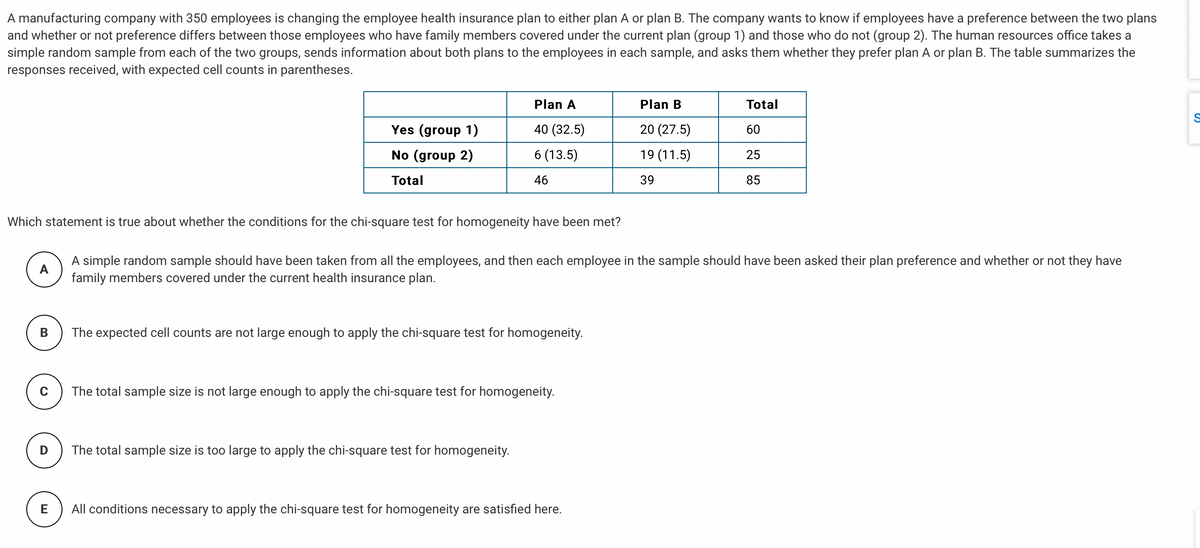A manufacturing company with 350 employees is changing the employee health insurance plan to either plan A or plan B. The company wants to know if employees have a preference between the two plans and whether or not preference differs between those employees who have family members covered under the current plan (group 1) and those who do not (group 2). The human resources office takes a simple random sample from each of the two groups, sends information about both plans to the employees in each sample, and asks them whether they prefer plan A or plan B. The table summarizes the responses received, with expected cell counts in parentheses.
Contingency Table
A contingency table can be defined as the visual representation of the relationship between two or more categorical variables that can be evaluated and registered. It is a categorical version of the scatterplot, which is used to investigate the linear relationship between two variables. A contingency table is indeed a type of frequency distribution table that displays two variables at the same time.
Binomial Distribution
Binomial is an algebraic expression of the sum or the difference of two terms. Before knowing about binomial distribution, we must know about the binomial theorem.
A manufacturing company with 350 employees is changing the employee health insurance plan to either plan A or plan B. The company wants to know if employees have a preference between the two plans and whether or not preference differs between those employees who have family members covered under the current plan (group 1) and those who do not (group 2). The human resources office takes a simple random sample from each of the two groups, sends information about both plans to the employees in each sample, and asks them whether they prefer plan A or plan B. The table summarizes the responses received, with expected cell counts in parentheses.
| Plan A | Plan B | Total | |
| Yes (group 1) | 40 (32.5) | 20 (27.5) | 60 |
| No (group 2) | 6 (13.5) | 19 (11.5) | 25 |
| Total | 46 | 39 | 85 |
Which statement is true about whether the conditions for the chi-square test for homogeneity have been met?
-
A simple random sample should have been taken from all the employees, and then each employee in the sample should have been asked their plan preference and whether or not they have family members covered under the current health insurance plan.
A simple random sample should have been taken from all the employees, and then each employee in the sample should have been asked their plan preference and whether or not they have family members covered under the current health insurance plan.A -
The expected cell counts are not large enough to apply the chi-square test for homogeneity.
The expected cell counts are not large enough to apply the chi-square test for homogeneity.B -
The total sample size is not large enough to apply the chi-square test for homogeneity.
The total sample size is not large enough to apply the chi-square test for homogeneity.C -
The total sample size is too large to apply the chi-square test for homogeneity.
The total sample size is too large to apply the chi-square test for homogeneity.D -
All conditions necessary to apply the chi-square test for homogeneity are satisfied here.

Trending now
This is a popular solution!
Step by step
Solved in 2 steps




